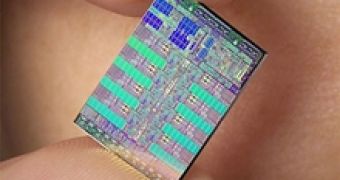In February, IBM together with Sony and Toshiba announced the appearance of a processor developed by the three companies and which was announced to be a veritable revolution in the world of today's semiconductors.
The Cell project gave birth to a processor with 234 million transistors, graved using 90 nanometer SOI (Silicon On Insulator) technology, which measures 221 square millimeters. In other words, it is twice as big as a 3.60 GHz Pentium 4 graved using the same 90 nanometer technology. In the first stage, Sony announced that this chip will be included in the PlayStation 3 console, which is due for next year.
The basic structure is composed of a PowerPC 64bit chip and 8 SPUs (synergistic processing units). The processor will also have 23kB of L1 cache memory and 512kB L2 and the SPEs have a 256kB cache. The overall bandwidth of the Cell processor is estimated at 100GB/sec.
Obviously, users became quite curious to find out whether this chip can by used for other devices than the gaming consoles, and the they got an answer last week from IBM and Mercury Computer Systems, which have announced the signing of an agreement over a longer period of time, according to which IBM is to promote the Cell chip for the medical and military applications. This version of the processor will be available starting from this year.
The broad range of domains where this processor is suitable proves its versatility, not to mention to decrease in production costs achieved by including 8 cores into one processor.
It seems that IBM will not stop here, and following the domains already announced, the Cell processor will be integrated in systems used other domains, such as: seismic exploration, defense, energy, biotechnology and many others. In other words, the break-up with Apple won't affect the company's turnover, the new solution being suitable for a vast range of applications.

 14 DAY TRIAL //
14 DAY TRIAL //